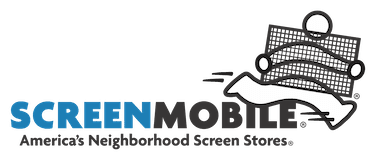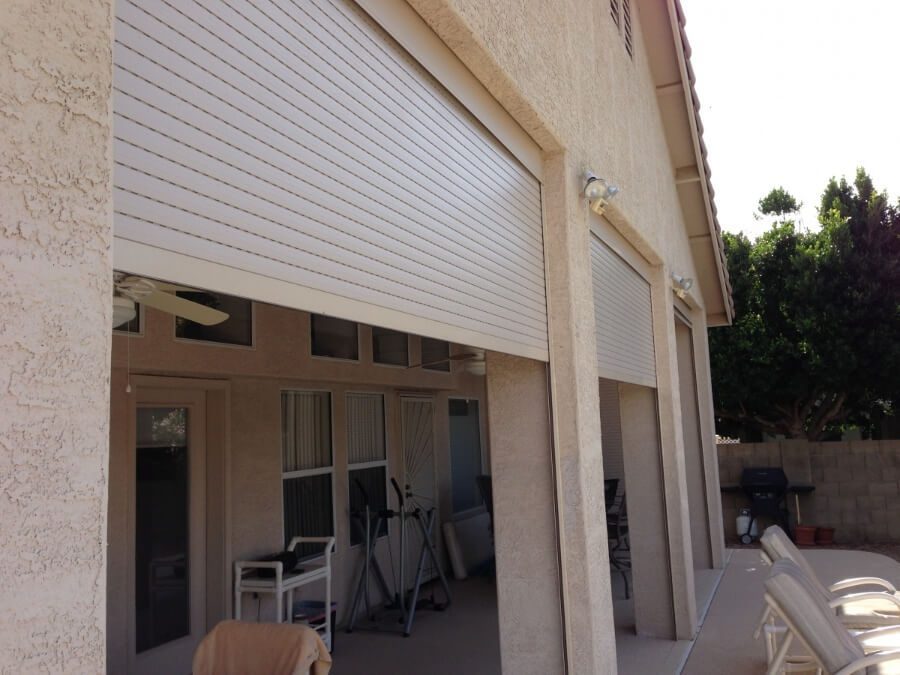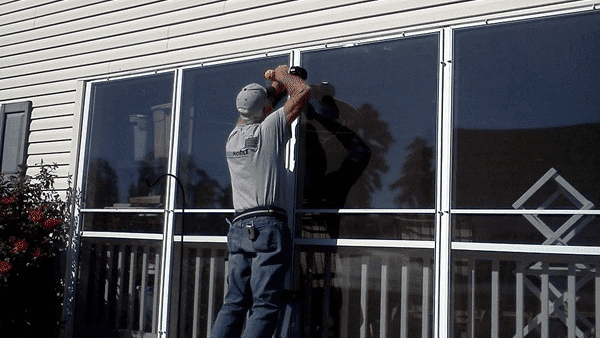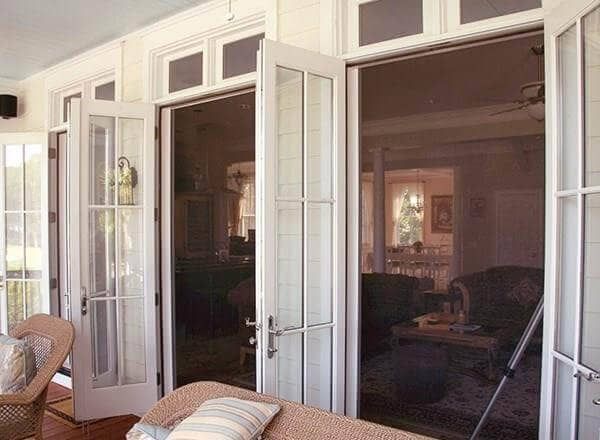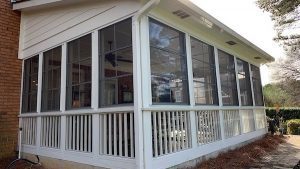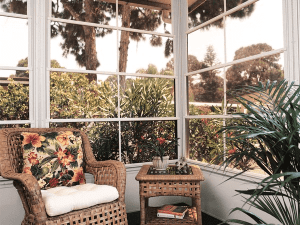
How are Window Screens Energy-Efficient?
Have you doubted the energy efficiency of window treatments? Are you not yet thoroughly convinced about how much you can save by choosing appropriate window screens for your climate?
Yes, window screens can be energy efficient.
Yes, window screens can save hundreds of dollars on your heating and cooling bills.
No, you don’t need to forgo curbside appeal or interior design when choosing energy-efficient window screens.
We have been in this business for over 40 years, covering 31 states. Our customers have shared with us how they save money with their window treatments, whether in hot, sunny climates or cold, temperate climates.
Read on to discover more about energy-efficient window screens.
What type of window treatments boost energy efficiency
There are two ways to increase the energy efficiency of your home via your windows, saving money:
- Exterior: Reduces the most amount of heat gain because it stops up to 90% of the UV rays hitting the glass, thus stopping the heat from transferring through the window.
- Interior: Reduces some of the heat gains from the window, but the UV rays still hit the window creating an energy transfer.
About 30% of the heat generated in your home enters through your windows. So whether you have an HVAC system or a whole house full of fans, you’re almost literally burning money if you don’t invest in adequate window coverings.
Here’s a list of 6 different types of window coverings you can select from:
Drapes:
Curtains are a great option if budget is your primary restraint. They are fully customizable, can be homemade, and will match your interior design flawlessly. They cover your whole window and frame, reducing the percentage of heat escaping.
Cons:
- They do not reduce your heat gain as much as solar screens
- Dogs love to play with them
- They’re not fixed, so coverage isn’t consistent
- They gather dust and dirt, especially heinous for a household with asthmatics.
Window Blinds:
Slatted blinds are trendy in kitchens and bathrooms. They offer privacy while open easily to let fresh air in (or smells out!) You can control how open they are between the slats or just raise the whole blind.
Cons:
- The pulley system and strings get easily knotted
- Cats LOVE to play with the strings
- Slats can break individually, creating a messy look
- Needs constant cleaning
Solar Screens:
These energy-saving window screens are best if you live in a hot climate with more year-round sun; states closer to the equator. They reduce solar heat gain, especially if you choose exterior window shades. This decreases your dependency on air conditioning, insulating your pockets with more cash.
Cons:
- Exterior shades are very obvious
- Bothersome having to remove them every fall, so remain semi-permanent
- Storage during the winter months
NOTE: Avoid the cons of storage and removal by looking at a motorized or retractable option. More details below
Storm Screens:
Solid and durable screens can withstand strong winds and heavy snowfall while offering a mesh that can reduce sun glare. With these screens, you won’t need to have your heating on full blast and won’t feel (or hear) the chill slicing through your home.
Cons:
- Expensive
Retractable Screens:
Great for more oversized windows and doors. Retractable screens are there when you need them and out of sight when you don’t. Easy to open and close with one hand or with the push of a button – they’re kid and pet-friendly and easy to maintain.
Cons:
- Not possible for every window type
- Expensive
Window Film:
Cheap cosmetic window coverings that protect some of your privacy and reduce sun glare.
Cons:
- They aren’t energy efficient in winter or summer
- They do not block gaps
- They do not reduce solar heat gain as much as solar screens
- They chip and peel after a short period
As you can see from the list above, quite a few different options exist.
How solar screens save on cooling bills
Solar screens, or other window treatments, were created to add Daytime privacy and save on cooling bills by reducing solar heat gain coefficient (SHGC). Typically, when solar radiation (Sunlight) hits your window panes, it passes through your window and transfers into heat. This makes living spaces unbearably hot and stuffy during the day. Solar screens offer a physical barrier, reducing the sunlight and heat that hit your window and move into your home.
If you’re used to running the air-conditioning all day and night just to keep the house comfortable, installing solar screens significantly reduces this dependency. When you get home, your home will be considerably cooler than outside. Of course, you won’t get that constant blast of cool air, but you’ll save loads.
How storm screens save on heating bills
Wooden frames expand and contract depending on the season; it’s natural and unavoidable. Most window and door frames are wooden; you do the math. In winter, the wood contracts, creating visible gaps along your window and door frames.
You can stuff the gaps with newspaper or caulking, but the most sustainable effort is to purchase a screen that will cover the whole window, frame included. Storm screens are known to block cold air from sweeping in uninvited or stop precious heat from escaping. Reduce your heat loss, and save your money.
Your window of opportunity
Save the planet and your pocket in one fell swoop and install energy-saving window screens. Whether blocking the heat and sun or keeping the nasty cold out of your home, choosing suitable screens can make a huge difference. You can DIY it or call your local Screenmobile: we come, we measure, we cut, and install. We customize every aspect for your own needs.

All About Home Window Sizes
The beauty about building your own home, or adding an extension, is being able to choose your window size. Yes, not all home windows measure the same. There are, of course, averages, but following them is not essential.
If you’re worried about window coverings, like drapes and screens, then push that headache aside–window coverings are primarily customizable. With Screenmobile, it is the case, anyway.
If you’re looking for information on the different types of windows and home window sizes, you’ve come to the right place. We consider ourselves window experts, and we’re more than happy to share our knowledge with you.
What is a standard window size?
Standard window sizes vary but within set limitations. It’s easy to order window replacements from the likes of Lowes or HomeDepot. Window screens are readily available, with drapes and fabrics already cut to size, facilitating your interior design and shopping needs.
However, no two detached houses are built the same (to an extent). Your house may be similar to the Smiths down the road, but don’t you want your home to showcase some uniqueness? A great way to have your home stand apart from the neighbors is by choosing different window sizes.
How to choose a window size for your home?
Four factors to consider when deciding what window type and size to install in your home are:
- Space available: Windows that open in or out need more space. A small room could benefit from higher windows, and a large room could benefit from a picture window.
- Orientation of the room: North-facing rooms should have more oversized windows to let in more natural light.
- Energy efficiency goals: Triple-glazed windows are the best for home insulation and bill reduction, but do the windows you envisage come in triple glazing? You should also consider the solar screens you’ll install (although Screenmobile provides custom screens).
- Budget: Cost is often the deciding factor when it comes to home renovations, but consider it an investment rather than an expenditure without return.
Window size measurements
When measuring for your new windows, it’s good to know that you should always add half an inch to the height and width for ease of installation. Windows also follow a four-digit notation: width (ft/in) height (ft/in). So, a window that measures 45″ x 45″ will be noted as 4545.
Energy Efficiency of Windows
Between 25%–30% of residential heating and cooling costs are attributed to windows. If you want to cut the costs of your bills, then you should be looking at insulating your windows. Achieve this by installing double or triple-glazed window panes, choosing the correct window treatments and the best window frame, and ensuring that windows fit cozily without gaps bordering the frame.
Single, Double & Triple Pane Windows
This is about how many panes of glass are in your windows. It’s very rare to come across single-pane windows in modern homes. Windows are one of the first areas that are improved when wishing to insulate your home and have it rank higher on the energy efficiency barometer.
Another way to say this is single, double, or triple-glazed windows.
Different types of windows
So now you know what size window you want/need, have you thought about what type of window you desire? Of course, there is a choice, there is always a choice, and we have the pleasure of listing them out here for you:
Double-hung/Sash Windows
These are windows where both sashes open vertically and tilt for cleaning and ventilation purposes. Single-hung windows are more common in older buildings. The double-hung windows are a much safer option when you have kids, as you can slide down the upper sash to ventilate your home rather than leaving the bottom sash dangerously wide open.
Picture Windows
These windows are generally large and can be considered partial wall replacements. They are not functional like traditional windows–they offer the view but do not open. Picture windows are very common in office buildings, restaurants, and homes with amazing views.
Slider Windows
Think double-hung windows on their sides. Slider windows are easier to open and close without lifting or pulling. They come in various sizes so that you can have smaller ones for your basement or larger ones in bedrooms.
Bay Windows
These windows are the most aesthetic in the selection. They offer a nook in your room, adding character and style. It’s a window that juts out from your wall and is paned on three sides, the two sides moving out diagonally. They are ideal for extra seating, storage, and book reading.
To note, bay windows generally don’t open. The middle window is often a picture window, with some side windows operating as casement windows.
Casement Windows
These windows operate like doors. They are attached with hinges and open out. Not convenient if you lack exterior space or are prone to strong winds and storms. Modern casement windows operate with a crank, making them easier to work.
Awning Windows
These are windows that open out at a slant. They offer more privacy as the window isn’t fully opened while promoting natural light and ventilation. Awning windows are commonly found in bathrooms and on mobile homes.
Custom Window
Be unique and choose your own window style and shape. You don’t have to decide on an average window size, and most window companies offer customized services. You can have any opening fitted with a window, with functions of your choosing.
Different window covering types
Regardless of the type of window you choose, its size, orientation, and shape, award-winning Screenmobile have you covered. We provide custom screens with various colors and fabrics to choose from; no need to worry about finding window treatments that fit!
Find your local Screenmobile and get your unique windows the perfect screens.
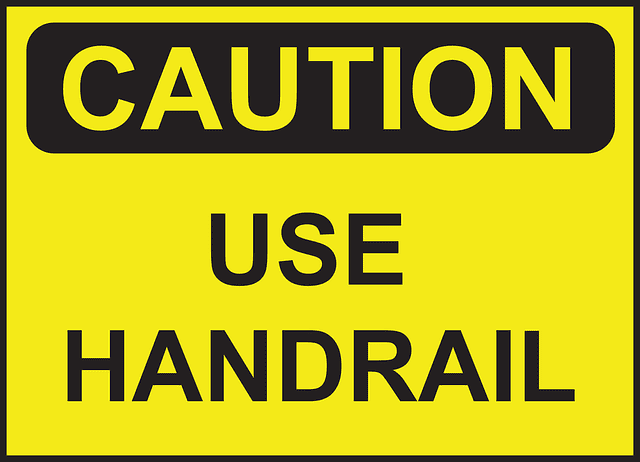
Six Types of Outdoor Handrailing
Handrails for outdoor steps are a convenient and safe feature to add, aside from the fact that the law often requires them.
They facilitate the mount and descent of your exterior steps for your elderly family members and friends, help kids keep their balance, and add value to your home. Well, if you choose the correct handrail to boost your curbside appeal.
You don’t have to pick the standard handrail available at lowes or HomeDepot – get creative, use a theme, and choose the material that matches your home.
Read on to discover Screenmobile’s favorite outdoor handrailings.
Exterior handrail codeBefore we go any further, it’s best to state now that there is a government standard requiring handrails for external steps that are a means of egress. Even if your step has one riser, you are required by US law to install a handrail if the route is a means of emergency escape. Non-compliance with the law can result in fines, and if there’s an accident, it can be very costly to your home insurance premiums. |
Exterior handrail ideas:
You can install different types of handrails for your outdoor steps. Metal railings are the most common for concrete steps, with wooden or cable fences reigning for decks.
But you decide for yourself what works best for your home and budget. Invest in stylish, long-lasting support unless you’re installing a handrail for absolute necessity.
We hope this list helps you make the right decision!
Metal Railing
Steel railings are the most popular for emergency exit outdoor stairs. They are solid, sturdy, and can suit any height.
Choosing galvanized steel will increase the longevity of your stairs.
Forged Iron Railing
We love these classic railings that are both practical and decorative. They can be bought ready-made or have custom-built handrails, following a design of your choosing.
To keep them in top shape, dry off the railings after rainfall, but if you spot some rust, here’s what to do: douse the area in kerosene, then scour with steel wool.
Vinyl Railing
Vinyl is a synthetic material often abbreviated as PVC. Vinyl is everywhere – flooring, clothes, records… and handrails. There are many reasons to choose vinyl, including low cost and environmental impact. You can choose different colors and shapes without worrying about humidity or moisture.
Wood Railing
Wooden handrails are the perfect choice to complement a wooden deck.
You might decide to close off the whole decking with a railing or include some handrails to facilitate climbing up and down the steps.
Having some sort of railing for your outdoor deck is a good idea. If you intend to entertain people in the evenings, handrails and border railing help prevent falls in the dark. You can also decorate them with outdoor lights.
Maintain your wooden handrails with sealing and varnish.
Glass Railing
Think glass paneling, think chic, think Hollywood hills, or your own backyard if you have the budget. This handrail option looks the best, but a lot of maintenance is involved in keeping it clean; however, if you have a killer view that your want to keep, go for a glass handrail!
Cable Railing
These are stainless steel cords of metal, taut, and wound together to fit between the bars of your rail. Cable railings are very handy for steep steps, and you can install them on different levels to accommodate different heights.
Standards for handrail heights
According to OSHA, Occupational Safety and Health Association, a handrail height must not be lower than 42 inches in height. Since January 2017, handrails now require a top rail. The top rail must reach at least 42 inches, with the secondary handrail measuring between 30 to 38 inches.

Is a Security Door Worth it? Our Security Door Buyers Guide
Deciding to install a security screen door instead of a regular one can be an emotionally trying choice. It’s more costly, true (more on that below), but it’s an extra layer of protection for your family and belongings.
You might think a security door is not worth it, that your neighborhood is safe. And that’s a risk you must take and live with.
We’ll help you make your decision with a clear conscience–regardless of whether you choose a security screen door.
What is a security door?
First, a little background on security doors. You know what storm doors are, if not from TV, then from your neighborhood. Storm doors are the cornerstone of American households, protecting families from harsh weather conditions since the Civil War.
Storm doors have certainly evolved since the late 1800s, one of those products being the security door. Of course, not every household needs a storm door; not everyone lives in Hurricane or Tornado Alley. But the extra layer of protection they offered was a feature other families went for.
Security doors a commonly found in two different styles:
- Stainless steel or aluminum frame
- Decorative or plain
You can keep your aesthetics and curbside appeal and still benefit from the many advantages security doors bring:
- Element of home security
- Resistant to intruders
- Supports Ventilation
- Prevents flying insects and critters
- Keeps kids and pets indoors
- Doubles as a solar shade
Pros and Cons of security doors
To save you the headache of figuring out if security doors are worth it, we’ve created a pro/con list for you. It might even answer some questions you didn’t consider asking!
Pro: Security
It’s all in the name, really, but security is a huge pro, especially if you’re fearful for the safety of your family and belongings. Security doors have stronger frames (stainless steel or aluminum) that can withstand forced pressure.
Security doors fit over your regular door, so you have a double locking system, including the doubled door benefits.
Also, to note, security doors work as a visible deterrent. A burglar is less likely to attempt breaking into a home with a security door, not wanting to risk extra time, failure, and capture.
Con: Not a DIY project
Many of you are DIY enthusiasts who relish a challenging project. However, security doors are not suitable for DIY projects. You can attempt it, but a warranty won’t cover you.
It’s better to get a trained technician to install your security door to ensure it’s properly fitted and secure. Screenmobile technicians measure and install security doors custom built to fit your home.
Pro: Ventilation
There’s nothing better than being able to leave your front door open to let a cool breeze flow through your home on a hot summer’s day. Now you can leave your door wide open and not risk pets escaping, children running out into the street, or opportunists taking advantage of your open-door vulnerability.
Many security door designs have mesh screens applied to allow home ventilation. It will help keep energy bills low, too.
Con: Price
Budget often takes priority with major household expenditures. It’s true; security doors are more expensive with heavy metal frames and multipoint locking systems. You need to weigh up your personal need for a security door.
- Do you live in an area prone to burglary?
- Is your home often isolated?
- Or perhaps only one person is present during the day?
- Do you have valuables locked away?
Although a security door cannot fully replace a home security system, it’s cheaper to maintain with a one-time purchase.
Pro: Weather deterrent Options
As mentioned above, some styles of security doors are evolved storm doors. You get the same weatherproofing benefits, insulated from cold air and wind while cutting your energy costs and protecting your family.
Con: Possible Corrosion/Rust
If you live in a region with heavy rainfall, you would think that corrosion or rust can quickly occur, regardless of the material you choose. However, with the metals we use and the powdered coating, you can expect years before corrosion or rust appears.
Aluminum: doesn’t rust and can take years to corrode. Salt is the active element in aluminum corrosion, meaning coastal homes could experience corrosion faster.
Stainless Steel: doesn’t rust or corrode. However, prolonged and frequent exposure to heat can damage its strength.
Pro: ROI and Boosted Home Value
Adding a security door immediately increases your home value. You will have less to pay on your home insurance, too. Taking the steps needed to fully protect your home saves you money in the long run, not to think of the valuables that you protect within your home.
Families feel safer in adequately secured homes, so if you’re considering selling within the next ten years, expect a higher price.
At the end of the day, security doors are the responsible choice.
Now that you’ve read through this information, you may feel more confident choosing a security door when deciding to install a screen door or upgrade your current one.
You can reach out to your local Screenmobile franchise and ask them for a quote, including a call out for measurements and door selection and a second call (two weeks later) for a professional installation.
We carry Titan and Vista–leading brands in security doors for homes and commercial spaces.
Give us a call today and have your home secure in a matter of weeks.
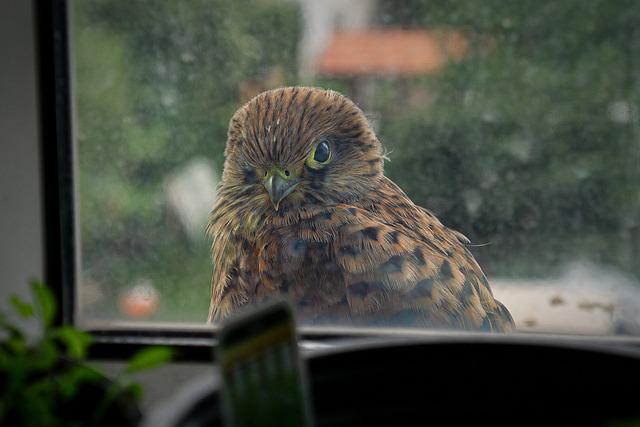
Make Your Windows Safe for Birds.
Birds are beautiful, and we all love to hear them tweeting outside our windows. But unfortunately, they are light, fragile animals who get injured when they fly into windows. Be it via the kitchen window, the bathroom window, a bedroom window, or the back door.
Birds flying into your windows can be a scary phenomenon. The cat gets agitated, the kids become excited, and you’re left with the sad job of having to collect tiny injured birdies. One easy solution to prevent birds from flying into your windows and doors is to install screens. This will save you the headache, and likely the bird, too!
Want to know more? Then keep reading.
Why do birds fly in through windows and doors?
First things first, why are the birds hitting your windows? Of course, location will decide the breed, but the why’s are similar across the board.
- The reflection of light is confusing the bird seeking shelter.
- They’ve set up a nest near (or on) your home.
- They’re flying in a murmuration.
- Indoor lights on at night distract tired migrating birds.
Clean windows are usually the primary issue, but will you sacrifice cleanliness and your terrific view for a few birds? Not many would. Jumping into prevention mode and creating bird-safe windows is your best option.
Best way to keep birds from flying into windows
At Screenmobile, we have seen how screens are effective at preventing collisions. For example, exterior screens reduce the glare of the sun hitting the window pane of glass, while interior screens reduce the light reflection, distracting migrating birds.
Migrating birds
We’ve touched on this a couple of times, so we’d like to explain the how and the why quickly.
Our feathered friends, like hummingbirds, terns, and swallows, traverse large areas to reach a warmer climate and often fly throughout the night. The moon and the stars are a clear navigational map for them, without the discomfort from the heat of the daytime sun.
However, lights in a home, especially many lights in a residential area, can confuse flight-fatigued birds into thinking it’s daybreak, and they swoop down to follow the light, flying straight into your window.
The State of Texas actively campaigns for homeowners to turn off unnecessary lights during migrations to lower bird mortality. This includes any exterior or interior light that is unnecessary.
What type of screens reduces birds colliding with windows?
Here’s a list of different bird-friendly window treatments you can install. Generally, a mesh or covering blocking your window will be the best result.
- Blackout screens: install them on the interior or exterior of your windows to prevent any light from escaping, distracting migrating birds.
- Solar shades: many options exist, interior and exterior, that initially stop the sun from coming into your home while maintaining your view. The same mesh and color will similarly work as a deterrent for clean windows and low-flying birds.
- Pet-resistant screens: feather-friendly and will be a softer blow for any bird misguided by a strong breeze.
When choosing interior window treatments, remember that the bird may still be distracted by the sun’s reflection.
How to install a bird-friendly window screen?
Bird-safe screens are going to double as your needed screens. There is no specific screen for birds. We advise you to consider all the elements and choose a screen accordingly. Elements to consider:
- Climate – hot or cold
- Proneness to hurricanes
- Proximity to wooded areas (critters)
- Pets in the home
- Energy efficiency
- Protection from burglars
Perhaps your need solar screens or a storm door. Maybe you are seeking a tighter mesh to stop bugs from flying in while keeping your home ventilated? Maybe you need a more robust pet-resistant screen, or go all out and get a security screen.
Once you’ve figured out the best option, you’re halfway there.
Screenmobile – How We Work
Let us tell you a bit about how we work at Screenmobile. We are a franchise mobile door and window screen service provider. We don’t have a brick-and-mortar store. We do, however, have vans and trucks. This is the part where we’re mobile!
All you need to do is fill out a quick inquiry form here or call your local franchise for them to set an appointment with you. We come to your home, do the measurements, and provide advice. You can check out what we have in stock and choose your preferred fabric and color.
We then set another appointment, usually two weeks later, where we come out to professionally install your new screens, regardless if you have screens for the first time or if they are a replacement.
So you don’t need to worry and bother about going to HomeDepot or Lowes, hoping you’ve taken the correct measurements, and then fretting for hours when you can’t find the correct dimensions. Choosing Screenmobile reduces your stress and time spent.
Two birds with one stone
Do your bit for nature and save some birds’ lives. Installing screens is also beneficial for the homeowner and occupants – the list of benefits is something to consider.
You can save birds while promoting ventilation in your home.
You can save birds while keeping flying insects and bugs out.
You can save birds while protecting your family and belongings from intruders.
You can save birds while keeping your lintels intact during hurricane season.
You can save birds while saving more on heating and cooling bills.
You can save birds while reducing sun glare and blocking harmful UV rays.
The solution is simple: Screenmobile window and door screens. All you need to do now is choose which ones!
Check out our Screenmobile store today and start your journey in making your windows bird-safe.
NOTE FROM SCREENMOBILE: If you are interested in reading more about bird safety and preventing collision, we encourage you to visit the American Bird Conservancy website.
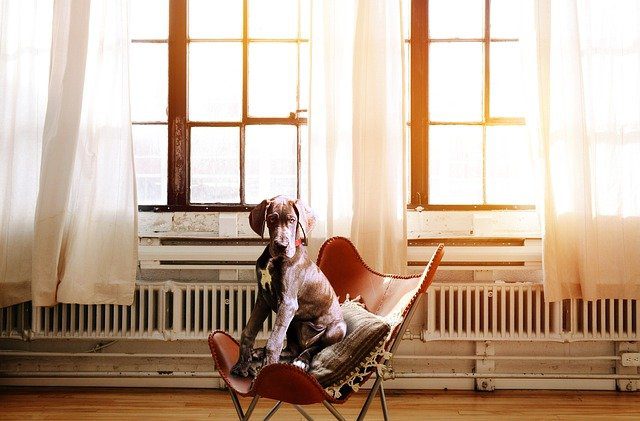
Are your Window Screens Pet Safe?
Your beloved pet is Boss, regardless if it’s a dog or a cat, a guinea pig or an iguana who has free roam of your home. They’re your baby, furry or not. Your pet’s happiness is at the top of your priority list; however, you still want them to be safe.
You probably have a specific chair for them and another chair they’re forbidden to mount on. They have their corner for food, rather than eat with you at the table (?), and you have your language, so you understand when they need to go out to do their business (mainly talking cats and dogs here now).
The window screens you’ve chosen for your home should be of the same caliber to resist pet scratches and tears, to be strong enough to prevent your pet from getting out while also maintaining the primary benefits of installing these screens.
You can get pet-safe window screens. We provide them here at Screenmobile! But let’s talk about them first to be confident you’re making the best purchasing decision.
What are pet-friendly screens?
There are two factors to consider when analyzing a screen for its pet-friendliness:
- The mesh
- The frame
The Mesh: this is the screen, the wonder material that allows you to keep your windows open in summer without worrying about an onslaught of mosquitos in your home. A cool breeze can safely circulate through your home, carrying the benefits of fresh air with it. They help cut your dependency on the AC and, most notably for you, prevent pets from running out.
The Frame: a screen is only as good as its frame, as we say in the trade. If you already have window screens installed, answer these questions:
-
- How old are these frames?
- Did you change the frame the last time you replaced the screen?
- Do you live in an area with extreme weather changes?
- Are your screen frames solidly in place? Do they shift if you put pressure on them?
- Are there any cracks in the frame or gaps around them?
Should I replace or hold onto my window frames?
Age
- >10 years: It’s advisable to change window frames after 10 years of use
- <10 years: If your frames are in good condition no need to change them!
Last Changed
- >15 years: Sometimes products last longer than projected, but 15 years is risking it.
- < 5 years: you shouldn’t need to change your frames in less than five years unless they have been damaged.
Weather
- Extreme fluctuations between hot and cold for wooden frames.
- Temperate weather conditions
Firmness
- The frame wiggles when you press slightly. You don’t want it to pop out suddenly.
- Frame is firmly in place, even when putting pressure on it.
Cracks and gaps
- Cracks and gaps are present due to age, weather, or pets hurling themselves against your screens.
- No gaps or cracks present in or around the frames
Do pet-resistant screens work?
Put simply, yes, pet-resistant screens are strong, durable meshes explicitly designed to resist pet clawing and scratching work. The screen material is more robust, usually a vinyl-coated polyester fabric.
Vinyl is commonly used as a shorthand name for polyvinyl chloride (PVC) plastic. In summary, with the exception of paints, glues, and certain films, “vinyl” as a product description almost always means made of PVC.
Source: https://healthybuilding.net/uploads/files/sorting-out-the-vinyls-when-is-vinyl-not-pvc.pdf
The mesh is thicker but still allows ventilation while stopping bugs from coming in.
Here’s a scenario
Your cat loves to sit at the kitchen window and watch the world go by. You like seeing her there and enjoy her company. You chat away to her while you prepare lunch and you’re secretly relieved you can keep your eye on her.
Open windows, though. A bird flies by, a neighboring dog barks, or a less-tamed street cat prowls close by, inviting your cat out to play. The last scenario you want is your cat fleeing and you spending your afternoon searching for her or anxiously awaiting her return.
Best to get a cat-proof window screen.
Installing a pet-resistant screen will:
- Keep your pet indoors, even if they push or scratch to get out,
- Leave your windows open for ventilation,
- Stop bugs from coming in, and
- Preserve your view.
Are pet screens worth it?
By all means, yes! Regardless if you have one or ten fur friends running about. If anything, for peace of mind. Plus, a specifically designed pet screen will last longer, saving you money in the long run.
What’s the difference between a pet screen and a regular screen?
The difference is the material of the mesh. The fabric is heavy-duty and costs extra. However, a cat screen, for example, can withstand clawing and scratching. Over time this leads to gaping holes in your screens, rendering them useless for their primary service. Your cat won’t be able to pop the screen out with her animal force, either.
Where can I install pet screens?
Pet screens are not just for your kitchen window. They can be installed over any opening and entry in your home. At Screenmobile, our technicians can prepare custom-sized pet screens to fit anywhere in your home.
Entry doors
Front and back doors can be installed with a frame and screen strong enough to keep your pet indoors.
Patio doors
Why not turn your patio into a Catio? Reinforce your patio doors with pet-resistant screens. Create a safe space for your pets to roam and enjoy your patio benefits without running out onto the street.
https://www.screenmobile.com/blog/what-to-know-about-french-doors-with-screens/
French doors
We’ll bust the myth right now: you can install screens on french doors. Whether they lead to the exterior or a room where your pets are not allowed, installing screens is a synch, especially retractable screens.
Windows
You’ll never know which nook or cranny your pet will find himself in, windows included. Don’t risk leaving an open window unprotected.
How to maintain pet screens?
Pet screens have similar screen maintenance guidelines to regular screens, except they require more frequent care.
- Pop out the screen from its frame (gently)
- Use warm soapy water and a light brush (no chemicals)
- Run the brush over the screen in circular motions
- Leave screen to dry before reinstalling
You can use a damp cloth twice a week to clean off any residue or build-up, but consider a deep clean every six weeks.
How to remove a pet-safe window screen
Here’s the thing: you don’t want to remove just the screen. You need to remove the frame and the screen. Feel around the edges for clips and gently remove them from the window. When your screen is clean, you can simply clip it back in. Only remove the screen if it’s damaged and aim to replace it.
If you’re having issues, or are worried about doing more damage than harm. You can reach out to your local Screenmobile expert for a hand.
Pet resistant screening
Pet screens tend to get dirty real quick. You have muddy streaks and animal hair caught in the mesh. There’s nothing weird or strange about vacuuming your pet screens once a week!
Screen replacement
First of all, do you need to replace your screen?
Liz from Screenmobile has outlined three things to consider before replacing your screen. With a quick explanation on how to change them. Like the guy in the video, maybe DIY is not your thing. Our fully trained Screenmobile technicians can expertly remove, measure, and replace your old, broken screens and frames.
Upgrading your window screen to resist pets
Now, you can see the benefits of pet-resistant window screens and how they can slide in nicely with any home decor or design. We hope you can make the right choices for yourself, your family, and your furbabies.
Contact your local Screenmobile today to discuss your needs and book an appointment.
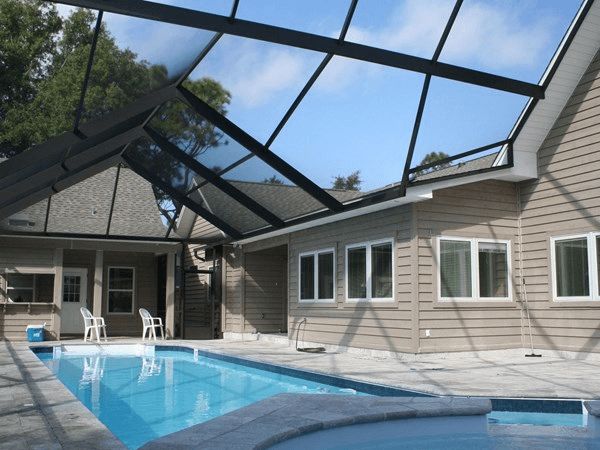
Pool Enclosures: Do I Need One?
You spend the whole summer by the pool, as do your kids, their friends, relatives, and every bug and insect in your district. Yet, only you fully understand the work hours put into pool maintenance; skimming, brushing, vacuuming, filter cleaning, and PH balance maintenance.
Your pool becomes the focal point of the summer, your salon, your refreshing oasis to dip into while the sun beats down. So, to make your pool more enjoyable with less maintenance, you consider a pool enclosure.
You’re here to learn more about these screened enclosures, what they are exactly, how you install one, and whether it’s worth your while (and wallet) to install one.
The short answer is yes; they are worth it. But if you need more convincing, then read on!
What are screened-in pool enclosures?
A pool enclosure is a structure built around your pool. It’s an extension to your home with your back door opening directly into your enclosed pool area. It’s like a three-season room but with a pool in the middle!
Better yet, your pool is now accessible year-round. Rather than open it up for the summer months, you can enjoy a few laps every morning – rain, snow, or sunshine.
Some families like inflatable bubbles over their pools, but at Screenmobile, we prefer the simplicity and elegance of traditional screens.
Advantages of a Screen-Enclosed Pool
There are more advantages than not to installing screen enclosures—primarily maintenance and livelihood.
- Prevents bugs
- Deters fallen leaves and other natural debris
- Blocks harmful UV rays
- Accessible year-round
- Prohibits uninvited swimmers
- Boosts home value
Prevents bugs
The mesh used on the screens is top of the range and designed specifically to block pests and insects. Wasps, mosquitos, and crane flies are the main guys who like to crash your pool parties. You spend your time lying next to your pool, swatting away these uninvited guests, and the evenings/mornings skimming them out of your pool.
Deters fallen leaves and other natural debris
We all like nature, but we’re not fans of leaves and other debris being swished around by the wind. Especially when it lands in your pool, it dirties the water, and you find yourself pouring in more chlorine than you would prefer. Another huge maintenance factor that screened pool enclosures helps with.
Blocks harmful UV rays
Depending on the type of screen you choose, you can have adequate protection from the sun. Install your solar shades into any custom design. A one-percent opacity in a high sun area can help block up to 99% of harmful UV rays. Perfect for looking after your family’s health. They provide privacy from passers-by.
Accessible year-round
A screened-in pool can now be considered an indoor pool! Ever wanted to swim under the rain and not get wet? The music of the drops drumming against your screened ceiling can be pretty meditative while you swim a few laps. It’s a nice feature for when you have guests staying. It’s also convenient for Spring when the sun starts to peak out but days are still cold – traditionally, you’d keep your pool closed until summer, but now, no need to.
Prohibits uninvited swimmers
Ever worry about your home security while you’re away on vacation? Sure, everyone worries. Opened pools are often the target for local kids to come and mess about. Aside from the danger, you don’t like the idea of other people using your pool.
Boosts the value of your home
You can boast an indoor swimming pool that adds massive value to your home. You will bring up the value of your neighborhood, attract better neighbors, and have a better selling price if you do choose to sell. Realtors highly regard extra rooms and floor space, so do it right and profit in the long run.
What to Consider When Screening in Your Pool
There are a couple of factors to consider when assessing your new project.
- Cost – how much budget do you have? Screens are cheaper than inflatable bubbles, with retractable screens asking for that bit more. However, consider this cost as an investment— for your family’s comfort, health, and overall house value.
- Space – if you don’t have a lot of space around your pool, a screened enclosure can become complicated. You might not be able to access certain sides of your pool, you’ll lose lounging space, and it will look cramped.
- Orientation – depending on where exactly your pool is in regards to the direction of your home, you can discover better installing solar shades on one side, for example, and retractable shades on the other side.
- Frequent users – is the pool used by everyone, friends, and relatives included or just your family? This is important because you will reconsider direct access from the house if everyone is to be using it. It might be easier to have an access door away from the house to reduce noise and traffic through your home.
Together these points will determine what type of enclosure to use, which materials and fabrics will be best, and how big it will be.
Your Screenmobile technician can help you with all these points, so don’t hesitate to reach out.
Advantages of an Open Air pool
So there we have it, an outdoor screened pool where you can reap summer’s advantages without the bugs and leaves (and harmful UV rays). Indoor pools are ridiculously expensive to install and costly to run. Indoor pools are also more likely to build up condensation and mold.
With your new outdoor enclosed pool, you can:
- Enjoy a summer breeze
- Cool off in your pool
- Tan yourself
- Lounge with a book
- Do aqua-sport
All of this without the hassle of bugs, insects, debris (leaves, etc.), harmful UV rays, and too-regular pool maintenance.
Contact your local Screenmobile franchise today and have your pool ready for this summer.
NOTE: Pool screen enclosures aren’t designed to keep children or pets out of pool areas. Please take the same safety precautions you would around a pool that hasn’t been enclosed and never leave children unattended near water.
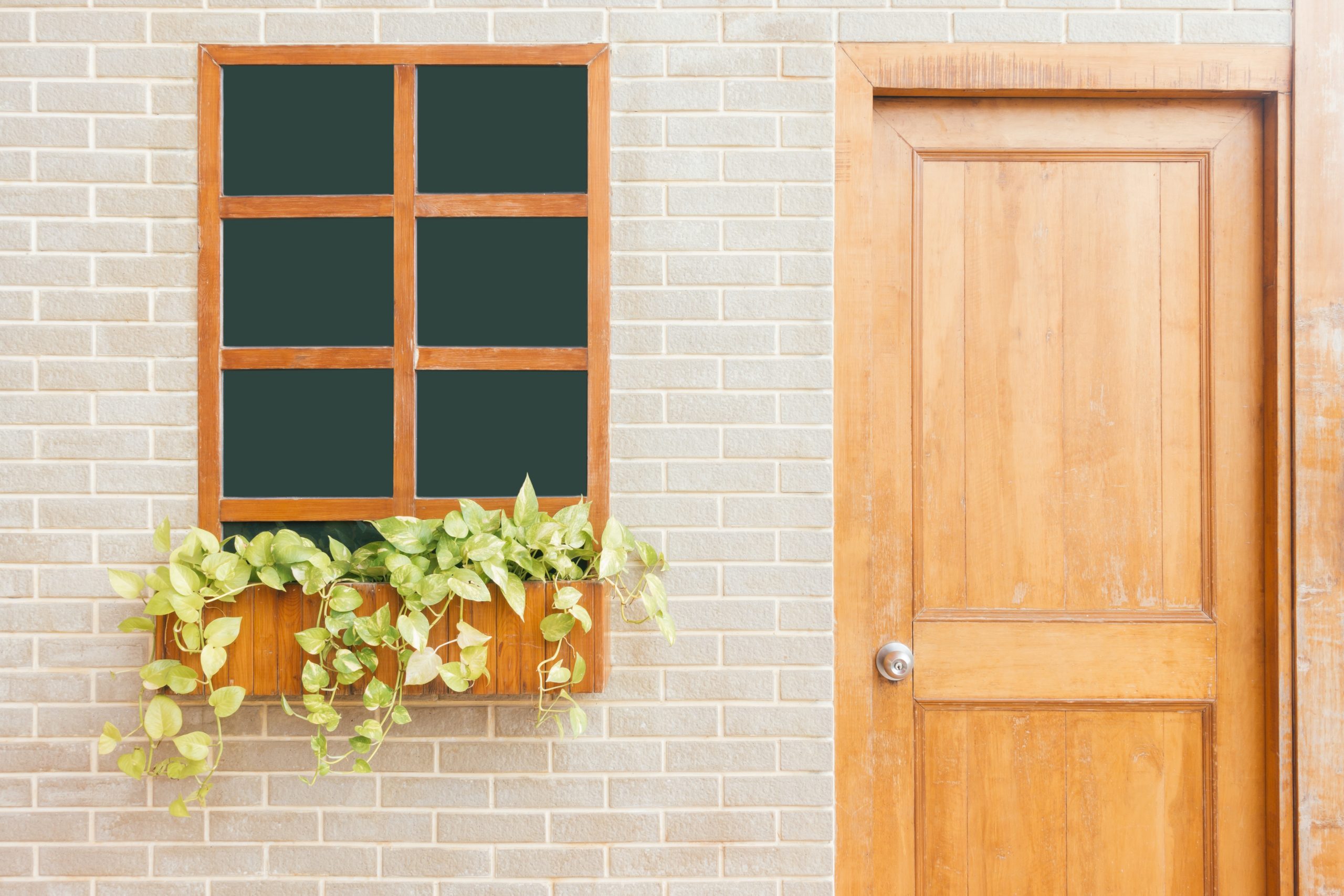
How to Choose the Right Window Shade Fabric
There are many types of window shade options, and choosing the correct fabric is essential in your home renovation project. You’ve already decided you need screens, but you have a specific reason. The devil is always in the detail, and your screen fabric is no exception.
You want something that will complement your home decor, bear the elements, and be strong enough to resist pets, intruders, critters, and/or insects.
But perhaps you’re not a professional and find yourself incessantly browsing the internet. You’re searching for that blog of all blogs that explain to you the intricacies of the different fabrics available for window screens.
You can put your mouse to rest because you’ve found the right place.
In this blog, we’ve got you covered… so you can cover your windows correctly and beautifully.
Keep on reading!
What are Window Shades?
Window shades are window treatments installed to improve the quality of your home and living. Depending on the area you live, you may choose shades for:
- Blocking sun glare and harmful UV rays
- Encourage ventilation and oxygen recycling
- Prevent pests and critters from entering
- Act as a layer of security to stop intruders from entering
- Reduce heat gain
- Increase the energy efficiency of your home
These are convenient reasons to choose window shades over traditional drapes. They are custom installed and have a tidy finish to them.
You’re in your home. Following tradition, you hang drapes over your windows. They’re constantly agitated by the wind, blowing dust particles throughout your home. Your cats like them, ripping your beautiful fabric. You close them to stop the sun’s glare and find yourself sitting in the dark on a hot summer’s afternoon.
Drapes are no longer the best option. Shades, however, fit in nicely with your decor. They open up your space and allow the sunlight to pour in without bugs pestering you or UV rays harming you, your family, and your pets.
Why Choose Window Shades?
As touched on above, there is a long list of reasons to choose window shades. Let’s get into more detail here:
Glare Protection
Whether you’re trying to watch TV, work from home with a screen, or are busy cleaning and cooking, the glare from the sun is annoying and potentially dangerous. Have you ever walked across your kitchen and became temporarily blinded due to the sun streaming in? What if you have a knife in your hand with your dog running under your feet?
Sun glare can also be frustrating when affecting screen visibility on TVs and laptops. That’s your work productivity decreased and relaxation time cut.
Some window shades will allow you to continue your day as usual without the sun’s glare. These shades won’t block your view, nor will they stop natural light from brightening up your home.
UV Blocking
Ever since discovering the hole in the Ozone Layer in the ’90s, we’re all clued to how harmful the sun’s UV rays are. You wear sun cream to protect your skin; you buy specialist clothes and sunglasses to prevent UV rays from touching you. Now you can protect your home, too.
More than 50% of UVA rays can pass through the glass of your windows! So while you’re sitting having lunch, while your kids are quietly playing in their room, or your pet is harmlessly basking in the sun heat, UV rays are damaging you and them. You can shut all your drapes and shutters and live like hermits in the dark, or choose a window treatment fabric designed to block UV rays. We prefer the latter.
You can choose fabrics that complement your home’s interior or exterior design thanks to modern design standards. They are easy to install and keep clean and have many secondary benefits, too.
Maintain your view
The dealbreaker for choosing window screens is your ability to keep your view. Many brands now offer high-tech designs that stop the unwanted from entering while still offering you your beautiful view.
Many traditional roller blinds and drapes cover your whole window. During the day this isn’t very attractive. With many people now working from home and homeschooling, you’re spending more daytime in your house.
Check out Phantom Screens if you’re curious about how it works – sun glare, UV rays, and insects are prevented from coming in with continued ventilation and your view intact. And they can be customized to complement your interior design, to boot.
Shade material deciding factors:
Let’s jump into the nitty-gritty here and dissect each factor that will help you choose what’s best for you, your family, and your home.
Interior or exterior
There are different window treatments available for internal purposes and exterior purposes. Your reasons may vary depending on your needs, and your choice will affect fabric choice. For example, exterior shades are more effective at reducing heat gain but need to be heavy-duty to withstand the elements.
Interior window shade options promote light-filtering, like roller shades.
Light Vs. Dark Colors
The color of the fabric is essential, depending on the position of your window. If you intend to reduce sun glare, choosing a darker screen will be the optimal option. Certain more expensive brands provide dark color screens that still allow you to keep your view.
However, if your screen is up to repel bugs and resist strong winds, you can choose lighter, neutral colors. Many people would still prefer a lighter color, not wanting the dark shades to be visible from the street.
Openness Differences
Different meshes are available to accommodate your needs. Reach out to your local Screenmobile technician for assistance, but know that you can have your screen:
- Deter flying insects
- Encourage ventilation
- Resist flying debris
- Block solar glare and harmful UV rays
- Energy efficient (reduce heat gain)
- Security reasons
- Increase your view while all the above.
Blackout Vs. Open Fabrics
Blackout fabrics are trendy for room darkening, like home cinemas and bedrooms. The material is thick and doesn’t let any light through, allowing you to enjoy movies during the day and sleep without being bothered by outdoor lights – neighboring exterior lights, street lamps, and passing vehicles.
Open fabrics allow you to enjoy your view, ventilate your home, and so on, as listed above.
Manual or Motorized
This is where we get technical. Motorized screens are becoming very popular now that homes are evolving with smart technology. You can control your heating, AC, and interior lighting; heck, you can even have robotics clean your home with a button on your smartphone – why not your window screens, too?
You’re in the home office working, and as the day goes on, the sun moves. When that glare hits your screen, you get frustrated. You’re in a highly productive state of mind and wish not to stop. A motorized screen allows you to control your window shade from your desk chair without getting up and manually lowering your blind.
Or you have your elderly mother-in-law in the spare room, and she wants to take a nap. She can easily control the blind from the comfort of her own home.
Needless to say, motorized screens are a bit more expensive. There is nothing ‘wrong’ with manual screens – they work just as well. All they lack is the comfort a motorized screen offers.
We can choose together.
Just know that options exist, that it’s never a one-size-fits-all solution. You can even choose different window treatments for different sides of your home! It all boils down to your needs, usually based on your home location and positioning.
If you’re not 100% sure or desire a professional second opinion, then your local Screenmobile technician is capable of assisting you.

Why Solar Screens Improve Home Energy Efficiency
Every household needs to improve its budget, and buying cheaper quality products is not always the best solution. Not for the planet, at least.
You can look beyond cutting costs with your shopping lists and after-school activities. Take a look at the bigger picture: your house. Have you ever considered installing energy-saving solar window screens?
It’s very likely why you’re here: you wish to understand how exactly solar screens improve home energy efficiency.
We’ll cover (nearly) everything you need to know, from what are solar screens to optimal times to use them to save costs on your energy bills.
Let’s jump right in.
What are solar screens?
Solar screens are window treatments that work against the sun. They are designed specifically for homes in areas with low cloud coverage, regions where the sun is in the sky more times than not. Their design is to protect you and your family, including your pets.
Solar shades can provide you with substantial savings on cooling costs. There are different types available, so you can choose the treatment that best complements your home decor, budget, and needs.
-
- Fixed panels
- Motorized screen
- Roller screens
To ensure the highest energy efficiency, opt for external solar shades. Interior treatments aren’t as effective in reducing heat gain as exterior shades.
Reasons Why Solar Screens Improve Home Energy Efficiency
The following list will boost your energy efficiency efforts while providing peace of mind and comfort. Your home is your oasis, your sanctuary. If the sun is your concern then solar screens are your answer.
Solar screens:
- Block harmful UV rays.
- Prevent glare from strong, unhindered sunlight.
- Reduce heat-gain.
- Minimize dependency on AC.
- Pest prevention method.
- Maintain longevity for carpets, furniture, and hanging art.
Block harmful UV rays
UV radiation is a source of major health problems in humans. We should be limiting how much time we spend in direct sunlight, even while in the comfort of our own homes. Sprawled on your sofa for an afternoon snooze is not a delightful experience when the sun hits your back.
Correct window treatments will block UV rays from infiltrating your home, family, and pets.
Prevent glare
Glare is not just a reflection bothering your work, kids’ homework, or daytime soap operas. Glare is when too much sunlight is present, which impairs your vision momentarily. Most notably dangerous while driving, glare can also cause discomfort in the home.
Ever walk across the kitchen to grab a glass of water and become suddenly blinded by the light? This temporary loss of sight can unbalance you, especially risky for the elderly who could fall and easily break a bone.
Reduce heat gain
The heat increases in your home the moment the sun hits your windows. Factor in the already sweltering temperature and before you know it you’re blasting the AC. Running your air conditioning hikes up your energy costs.
Solar screens reduce heat by up to 15% when installed on the exterior of your house.
Minimize dependency on AC
It’s nice to walk into a cool room after being outside under the hot summer sun. We experience it when shopping, so why not recreate the experience for our own homes? Many people do, but it’s not an energy-efficient solution for the home.
By blocking the direct sunlight that enters your home through windows, and reducing heat gain, you can increase the temperature on your AC settings. 76% of sunlight turns into heat inside your home. Solar shades will save you a lot.
Pest prevention
The mesh used in some window treatment options has two major functions:
- Allows a cool breeze to ventilate your home, and
- Prevents flying bugs and mosquitoes from unwelcomed visits.
Many people use pest prevention plug-ins which, ultimately, consume energy. Let us not forget the personal disturbance caused by these pesky insects. Insect screens are a built-in feature with most options available.
Interior upkeep
Sunlight can damage your personal belongings and home interior design. It contributes to the fading of your carpets, rugs, painted decoration, photo’s displayed, and wall hangings. It costs energy to manufacture these items, which can be indispensable for a homeowner.
Needing to refresh your interior frequently due to sun damage is not efficient. Apply sun shades to keep your favorite belongings in tip-top shape for longer.
Are Solar Screens worth it? Do Solar Screens work for energy efficiency?
Yes and yes. Add solar screens to your home improvement list today and be ready for the summer heat. Your air conditioning unit can use up to 3000 watts per hour on a warm day – that’s the equivalent of having 50 standard lightbulbs turned on at the same time.
Turn off the lights to save energy, reduce your AC needs too.
When To Consider Using solar screens?
When you decide to become more energy-efficient, you need to consider every aspect of your daily living. Windows included.
When you want to start protecting your family’s health and reducing energy costs, contact us to discuss the different solar shades available. At Screenmobile we cater to all window types and all budgets. We’ve got you covered, well, your windows, from semi-permanent exterior panels to motorized solar window screens!
Any place, any need, any screen. Give us a call.

What is a Sunroom?
Do you ever just want to sit on a lounger in your garden all day long and soak up the rays?
Did you just have a minor panic attack reading that?
Spending too much time in direct sunlight is dangerous. UV rays are very harmful to our skin and hair. We only need 30 minutes to soak up our recommended vitamin D allowance, which can be achieved with a school run, a drive to the office, or a quick run out to the shops.
Still, you don’t want to be locked up in your house all day, every day, especially when the sun is shining and inviting you out.
Sunrooms are the best solution for any homeowner worried about direct sunlight but still loves summer vibes. If you’ve ever wondered what is a sunroom and how you can get one too, then continue reading.
What is a Sunroom?
A sunroom is a room with a large number of windows that lets in as much natural light as possible. In these rooms, plants and furnishings are typically used as decor. In addition, sunrooms can be built on top of an existing patio to bring in natural light and ventilation. Sunrooms are popular home improvements because they increase a property’s value while also providing more space for relaxing, working, or reading a book. Sunrooms are also known as solariums, garden rooms, Florida rooms, or Three Season Rooms.
Why get a Sunroom?
A Sunroom is an extension of your home, like a covered terrace area where you can still enjoy being outside but without being bothered by harmful UV rays, strong winds, or pesky bugs. Instead, you get to relax in the natural light, feast your eyes on nature, and seclude yourself away from your daily household chores.
Benefits of a Sunroom:
-
- Creates an extra room
- Accessible from principal residence
- Adds value to home property
- Clear garden view
- Natural light
- Blocks wind
- Prevents pests from entering your home
Your Sunroom can be custom-designed with french doors, and adequate window treatments to suit your personal needs.
Different types of Sunrooms
Like everything that exists, there are different types of sunrooms. It depends on your budget–how much you are willing to invest.
Sunporch
While a Sunroom is like an extra living room, a Sunporch is more outdoor. Often people decide to screen off their porches to enjoy still being outside without annoying mosquitos buzzing along for a picnic.
There are a lot of screens available. You can choose retractable screens or something more permanent. You can choose screens where you can enjoy your view, but nosy passersby can’t see. If this is an option that interests you, check out the different porch screens available on our website.
3-season Rooms
You can’t use a three-season room the whole year-round. There isn’t an HVAC system in place. If you live in a sweltering climate, you won’t be able to use this room in Summer as the glass walls will capture heat and make the inside unbearable. However, you can enjoy those winters in your three-season room.
For colder climates, you won’t be able to relax properly in a three-seasoned room without heating.
Ask yourself why you want this space and what purpose it will serve. We advise against creating a three-seasoned room for permanent, year-round use.
Learn the 5 Benefits of a Three Season Room.
4-season Rooms
This is the most expensive option on the list. However, a four-season room truly is an extension to your home where you have your HVAC system running. These rooms can efficiently serve as guest rooms, home offices, or second family rooms. You might even use it for an indoor swimming pool, accessible all year, depending on the size.
Four seasoned rooms are climate-controlled and custom-built for your comfort and home aesthetics.
Regardless of the type of sunroom addition you choose, know that you can select the frames and shades’ material, color, and design. You can also choose energy-efficient window treatments for your contribution to the climate.
Can I DIY my Sunroom?
If you are comfortable and skilled with building and construction, you can build your sunroom. You just need to be smart about where you choose to buy your materials and not be embarrassed to call a professional when needed.
Building your sunroom will give you more control and can be cheaper if you’re confident in your DIY skills. However, we advise against it for a first-time project. If you want to put your skills to the test before embarking on a large project like this, build a catio first!
How much do Sunrooms cost?
As mentioned above, there are different types of sunrooms to complement your budget. Whatever you put into your sunroom will come back to you as an added value to your property. They are also great for curbside appeal, which could boost the local market.
You also need to consider the final size–how much space will your sunroom take up. How many windows need covering, how much area needs to be cooled/heated, etc. Contact us for an estimate today; we are quick to respond.
Get a professional; call Screenmobile!
At Screenmobile, our technicians are industry professionals. We come to you with all the options so you can see for yourself, from the comfort of your own home, the different options available. We are here to help and advise you to make the best decision for your home needs, budget, and home aesthetic.
Any place, any screen, any need. Give us a call.



